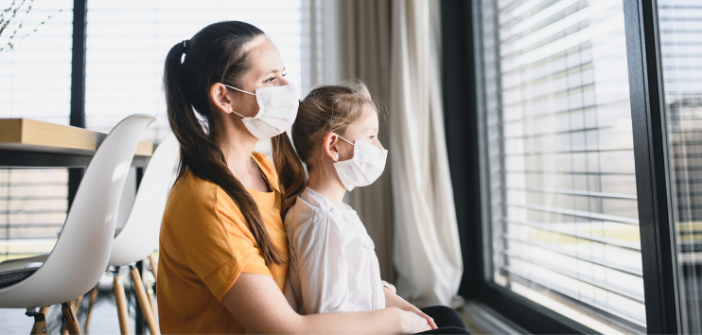France is experiencing a very sharp increase in the number of cases, with more than 200,000 new cases daily. To prevent significant social and economic disruptions, the Government has decided to implement from January 3, 2022, the isolation and quarantine protocols of phase 3 of the HCSP’s opinion.
1- For positive individuals with a complete vaccination schedule (booster carried out according to health pass requirements) and for children under 12 years old
Isolation now lasts for 7 full days after the date symptoms begin or the date of the positive test sample. However, after 5 days, the positive individual can end isolation under two conditions:
– they take an antigen test or RT-PCR test, and it is negative
– they have no clinical signs of infection for 48 hours
If the test is positive or the person does not take a test, isolation remains at 7 days. They do not take a second test on day 7.
2- For positive individuals with an incomplete vaccination schedule (booster not carried out) and for non-vaccinated individuals
Isolation lasts for 10 full days after the date symptoms begin or the date of the positive test sample.
However, after 7 days, the positive individual can end isolation under two conditions:
– they take an antigen test or RT-PCR test, and it is negative
– they have no clinical signs of infection for 48 hours
If the test is positive or the person does not take a test, isolation remains at 10 days.
What are the new quarantine rules for close contacts?
The quarantine rules for close contacts are the same regardless of whether they are a close contact of a positive person who lives in the same household or not.
1- For close contacts with a complete vaccination schedule (booster carried out according to health pass requirements)
There is no longer a quarantine; however, close contact individuals must strictly adhere to barrier measures, especially wearing masks indoors and outdoors, limiting contact, avoiding contact with individuals at risk of severe Covid-19, and teleworking where possible.
Additionally, close contacts must take a TAG test or RT-PCR test as soon as they learn they are close contacts, followed by conducting self-tests on day 2 and day 4 after the last contact with the positive individual.
If a self-test is positive, it should be confirmed with a TAG or RT-PCR test. If the test is positive, the person becomes a case and starts isolation.
2- For close contacts with an incomplete vaccination schedule and for non-vaccinated close contacts
These individuals must observe an isolation period of 7 full days from the last contact date.
To come out of quarantine, these individuals need to take an antigen test or RT-PCR test and have a negative result.
If the test is positive, the person becomes a case and starts isolation.
3- For children under 12 years old
For close contacts in school settings, the national education protocol applies. This includes a TAG or RT-PCR test for all class students as soon as a case appears within the class, and returning to class upon presentation of a negative result.
Furthermore, students take self-tests on day 2 and day 4. Parents must provide a sworn statement of test completion and negative results on day 2 and day 4 to allow the student to remain in class.
The self-tests included in the contact case screening schedule (for individuals with a complete vaccination schedule and children under 12 years) will be covered by the Health Insurance and dispensed free of charge at a pharmacy after the test on day 0.


